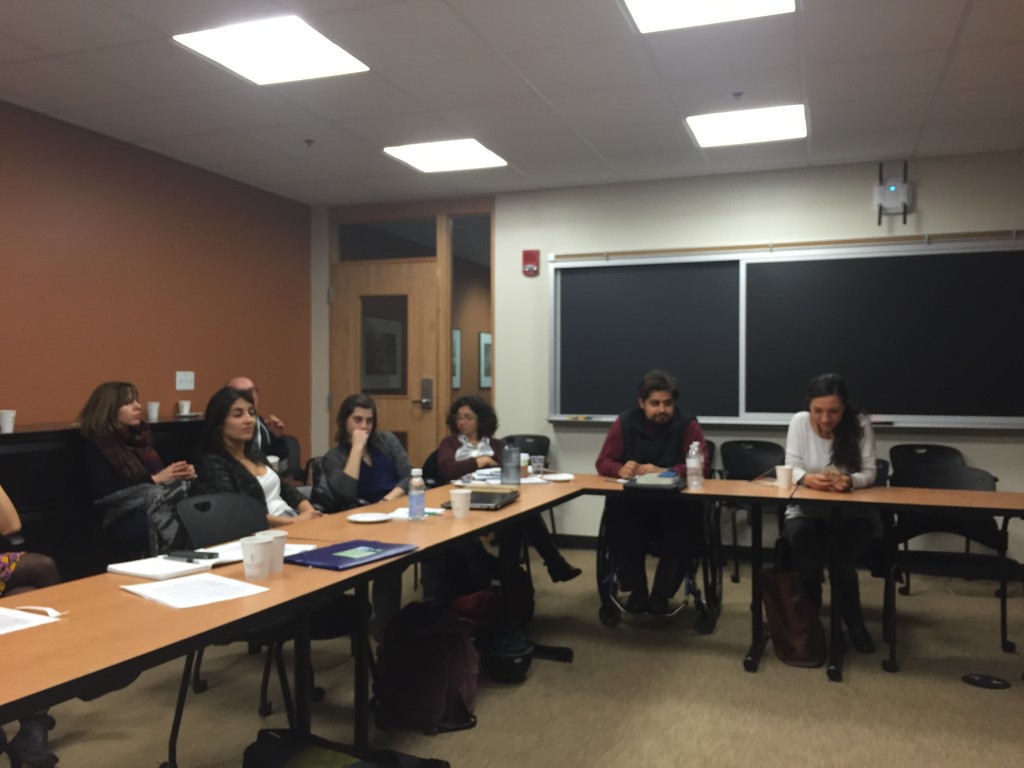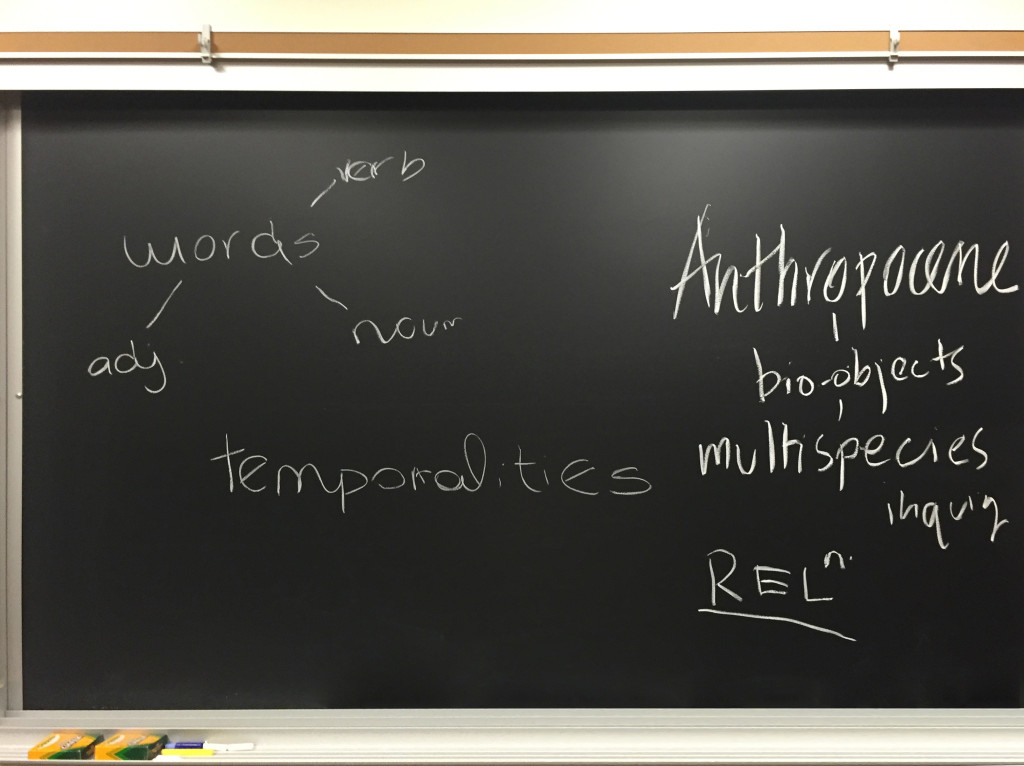On bio-objects: The concept and research network
Niki Vermeulen, Sakari Tamminen, and Bettina Bock von Wülfingen
The bio-object concept and the associated network have grown out of a common interest in issues surrounding the boundaries of the biological sciences and how they meet various aspects of society. The concept was born of the need for a heuristic device allowing the analytic gaze to be focused on a multiplicity of “objects of life” and the myriad processes that render life as an object that can be known, and hence grasped for intervention. The concept is biographically situated in the European STS research scene of the late 2000s, where it emerged in objection to some writings’ implications that the secrets of life can be reduced to genetic code. Thus, it voices opposition to reductionist interpretations surrounding life’s generative potentiality. At the same time, the concept, in effect, posits that work on philosophically and politically framed questions within the social sciences about “life itself” must be informed also by nuanced empirical studies of how the status of “life” is accorded to various vital objects. This endeavor demands a concept that does not carry the historical weight (from moral, philosophical, and religious realms) associated with discourses on “life itself.”

The bio-object network brings together researchers who are interested in the new biosciences and, indeed, in bio-objects in all their diversity. Since its establishment, in 2007, the network has, with the aid of EU COST funding, grown quite extensive. With more than 80 members, it spans a broad spectrum of disciplines – sociology, history, philosophy, anthropology, and the life sciences. The COST network, under the name “Bio-objects and Their Boundaries: Governing Matters at the Intersection of Society, Politics, and Science,” concentrates on three key questions:
- What are bio-objects, and how do they span various boundaries?
- What challenges do bio-objects pose for governance and regulation?
- How do bio-objects generate and get generated by various relations – social, cultural, material, etc.?
Bettina, Niki, and Sakari considered how the concept can be used in practice and, through a number of case studies, illustrated where life is presented through relations found, for example, within bioinformatics. They also explored how the attempts at modeling life – to objectify life through relations – are culturally mediated in scientific practice.
Multispecies ethnography
Stefan Helmreich
Taking Kirksey and Helmreich’s article about multispecies ethnography as a point of departure, Stefan explored the socio-historical context of the phenomenon and gave an eloquent update on new arguments drawn from a wide range of literature. He started out with several ways in which dogs can relate to humans, from rescuing us from danger and detecting substances on our behalf to being companions and comforters, then began unpacking these relations as fruitful starting points for multispecies ethnography. He continued by demonstrating how well the multiplicity of relations is often depicted by bio-art and bio-artists, as both help to unwrap the “sacred bundle” of life. In fact, bio-artists have had a much larger role – they were among the first to push forward with ideas in this field, with the Multispecies Salon exhibits held at AAA meetings. Stefan compared multispecies ethnography to various approaches applied in ethnographic research – in research traditions ranging from ethnoprimatology to ethnomicrobiology – and borrowed from their discourse in order to map, analyze, and problematize the idea of multispecies ethnography.

What seems fundamental to multispecies ethnography, in a recurring pattern hinted at in the other approaches too, is the explicit effort to shift the boundaries between the researcher and the research object, between knower and the known, and perturbation of the modern dichotomy between the human perspective and the Other. With the modern way so imbued with traditional ethno¬graphic methods and manners of representation, can we render the perspective of the other species visible, through innovative research approaches that break from methods centered on text and the associated senses (the visual and cognitive)? What about sounds and the visceral, especially since we know that our voice is mediated through bio-objects and multi-species relationships, through parchment, paper, and/or the bacterial culture on an iPad screen?
The multi-species world and bio-objects
Andrea Núñez Casal: microbiomes
Luísa Reis Castro: anthrozoology and pests, mosquitoes
Nadia Christidi: art, science, biology, conflict in the Middle East
Richard Fadok: “bio-inspired design”
Caterina Scaramelli: bovine biopolitics
Michelle Spektor: biometric IDs and databases
Lucas Mueller: aflatoxins
Rijul Kochhar: antibiotic-resistance research in India and the US
Alison Laurence: animals on display
Jia-Hui Lee: anthrozoology in post-conflict zones, olfaction
Peter Oviatt: domestication and commodification of fungi
Claire Webb: the search for extraterrestrial intelligence
Valentina Marcheselli: astrobiology
That a host of species can live with humans (and within a human host) and that these can be conceptualized as both enemies and friends can be viewed in terms of the human microbiome. Immunity as community opens numerous perspectives to health and car, while also showing diversification and inequalities connecting gut, food, and political cultures (Núñez Casal). For instance, while mosquitoes connecting with humans can bring disease, they can also become a public health tool that prevents infections (Reis Castro). In the context of war too, the lines between friends and foes can become reconfigured through multi-species relations. In one example, the Iraq War saw people become objects of destruction, yet the Baghdad zoo and its animals became ground for the reestablishment of social relations and international connections (Christidi).
These patterns are closely connected to differences between security and insecurity, yet another interplay in relations between the human and non-human species. As with mosquitoes as friends and foes, microbes can protect (as in the microbiome) yet can also resist being protected against (as in antibiotic-resistance), through adaptation and their travel through various cultures (Kochhar). In another landscape, through the care of and for water buffalo, wetlands that need protection are also protecting the livelihood of their inhabitants (Scaramelli). However, the balance in multi-species relation¬ships is continuously at stake and reconfigured, or strictly regulated as in the case of aflatoxins (Mueller) or cheeses (Paxson). All the concomitant issues are closely related to the governance of life and modes of governing life.

Another theme that ran through the presentations was the way in which bio-objects and multi species relations are defined by form, smell, and taste. In the case of bio-inspired design, matter mimics life and life becomes active matter in various scenarios of emergence ruled through perceived principles of life, as form and function are blended (Fadok). In spaces that entail such melding, we learned that all smell can be reduced to six chemical components, but are those deconstructed smells still alive (Lee)? And can, in the case of truffles (Oviatt), smells constitute a difference between French, Italian, and Romanian identities?
Finally, the discussions explored the identity of life. In Israel, bodily identity can be transferred to a chip with biometric information (Spektor), creating a split between individual and informa¬tion, an opening for rethinking the meaning of historical and political relations for today and the future. And can another gap be closed, with fossils of political life (such as Mount Rushmore) being subsumed by the category “natural history” (Laurence)? Finally, the quest to seek extraterrestrial life and be able to escape Earth’s tether calls us to re-imagine what life is and how it can be known (Marcheselli), while also raising the question of whether, or how, instruments for finding life are themselves mediating (Webb), bringing bio-objects to life when within a proximity of vital signs – like the hyphen in bio-object concept itself.
Recombination, remixing, repurposing, and more
From the preparations and the initial presentations, it was already clear that bio-objects and the “multispecies” framework are both not only a way of conceptualizing and framing the social study of the biosciences but also a heuristic device to address the complexity and the (shifting) perception of relations between the organic and the non-organic and among various species in their broader social and cultural context. That both concepts focus on relations in a synthesis of material and diverse social-cultural-economic relations makes their relationship worth exploring.
Discussions focused on what the “bio” of the bio-object is and on how it is related to the other “bio”s, such as bio-value, bio-capital, bio-politics, and bio-labor (and/or multi-species labor). Is this a matter of object versus process? What about bio-epistemologies and bio-objectivities? Or does this objectification also take into account the more negative aspects of objectifying? And how should substances such as air or water be added to the picture? Are they bio-objects too? These questions led us to consider politics of engagement, mediation, intersubjectivity, and abiotic signs for “bio”s. Can we also think in terms of lifetimes, of objects-by-bio?
In the case of the microbiome, it became clear that both concepts address the other’s shortcomings: where the bio-object concept does not provide obvious ways to talk about relation-ships among multiple species and the numerous elements of life (the microbiome as a bio-object composed of many bio-objects), the “multispecies” approach does not allow ready analysis of the scientific work that transforms life (e.g., processes of bio-objectification).![]()
![]()
An important observation was made at this juncture; that bio-objects as an analytic category can be used to think about issues of freedom and containment. How does freedom work in application of freedom of movement and pushing the boundaries of life – such as in the creation of a non-free body when data are stored elsewhere and can be stolen: a stolen self?
Related to this is the opening up of the categories of life, into digital representations of life but also into ruins of life and bodies of death. With regard to the material stuff of life, the flesh to the bones, we find categories of life able to be opened through instruments, technological objects such as microscope and satellites that mediate life, through which we zoom in and zoom out. Turning from space to time raises the question of when life ends: Where do the thresholds of life lie, and can we talk about pre-life? This is, quite literally, a matter of life and death. Finally, we can look at symbiosis. Ruins can be conceptualized as runaway life rather than any sort of death. Should we, for instance, understand antibiotic-resistance as the ruins of antibiotics or, instead, antibiotics out of control? And how is this related to cultivation and uncultivated/uncultivable life?
An important issue that arose repeatedly in the presentations and discussions is the primarily Euro- and US-centeredness of these approaches (the “multispecies” approach is more connected to US traditions, and the idea of bio-objects emerged in Europe). While the geographic heritage of both approaches is not surprising, it is important to reflect on this and find ways to expand both arenas, striving for a more global playing field.
Finally, all our presentations and discussions expressed a love for life. Eco-love. Affection for life, living, and the living, expressed through careful observation, analysis, and reflection. We also enjoyed some excellent talk and tastes of gastro-objects: truffles and cheeses.
Opportunities for future encounters
During the 4S/EASST meeting in Barcelona – there will be a bio-object track:
Revisiting bio-objects and bio-objectification: Categories, materialities and processes central to the (re)configuration of „life“ (http://www.nomadit.co.uk/easst/easst_4s2016/panels.php5?PanelID=3917).